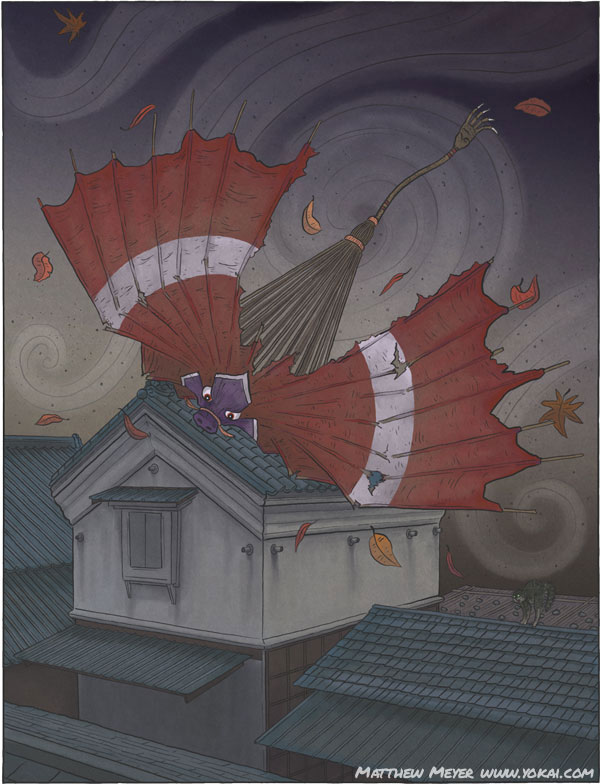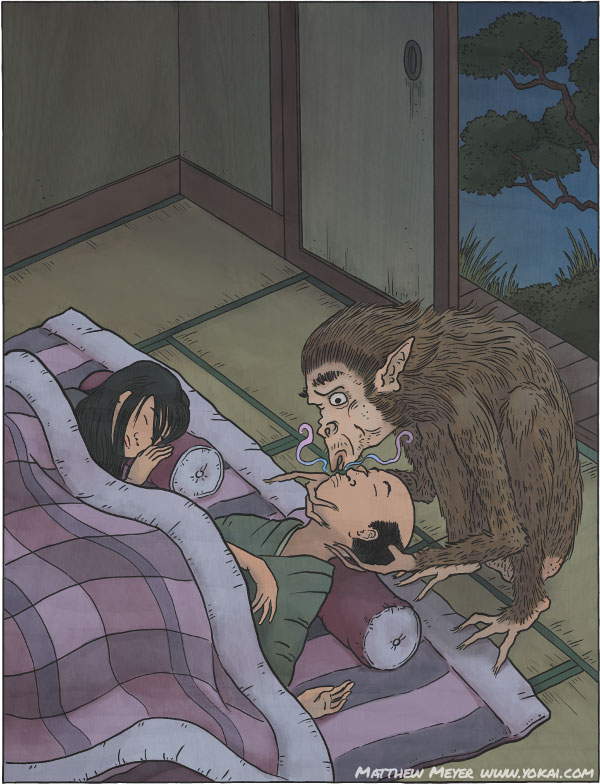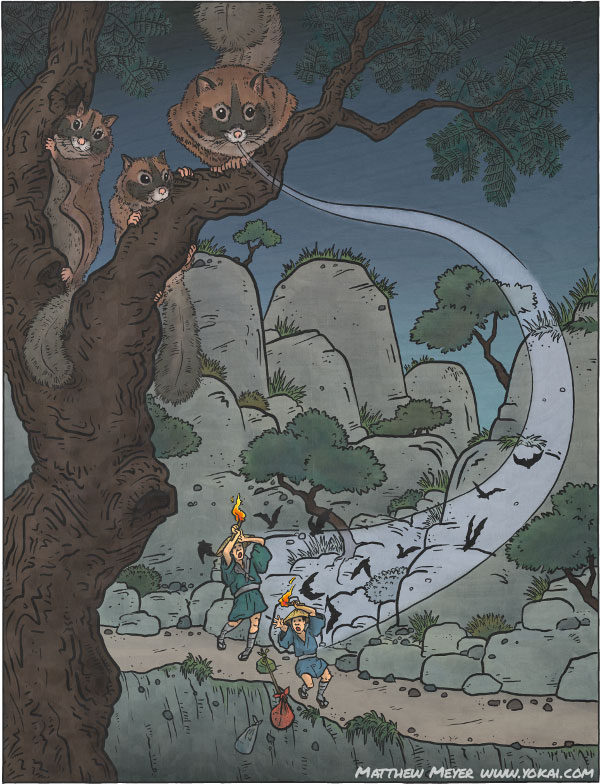Today’s yokai is a little late… I came home to a failed hard disk and have spent the evening recovering things. Ahhh computers. So I just got into bed, stressed out, and remembered I have a yokai to post!
Fortunately for me, today’s yokai is a short one, so this blog post won”t take too long. Today’s is another tsukumogami: a skeletal umbrella.
It doesn’t really have much of a claim to fame. There are no stories about it and there aren’t a lot of images either. The only real claim to fame that it has is that it was featured in one of Toriyama Sekien’s encyclopedias. However, that alone is pretty important!
Sekien’s writeup on this yokai leaves a little to be desired, though. Actually, he spends most of the description talking about another yokai, the shachi. The shachi is essentially a yokai killer whale or dolphin. You can actually see them on top of most Japanese castles as roof ornaments. The shachi was believed to have the power to summon rain, and when it rains you need an umbrella! <– That is pretty much how this yokai is described by Sekien. So, it’s quite an enigmatic one! Anyway, enjoy the honekarakasa!







